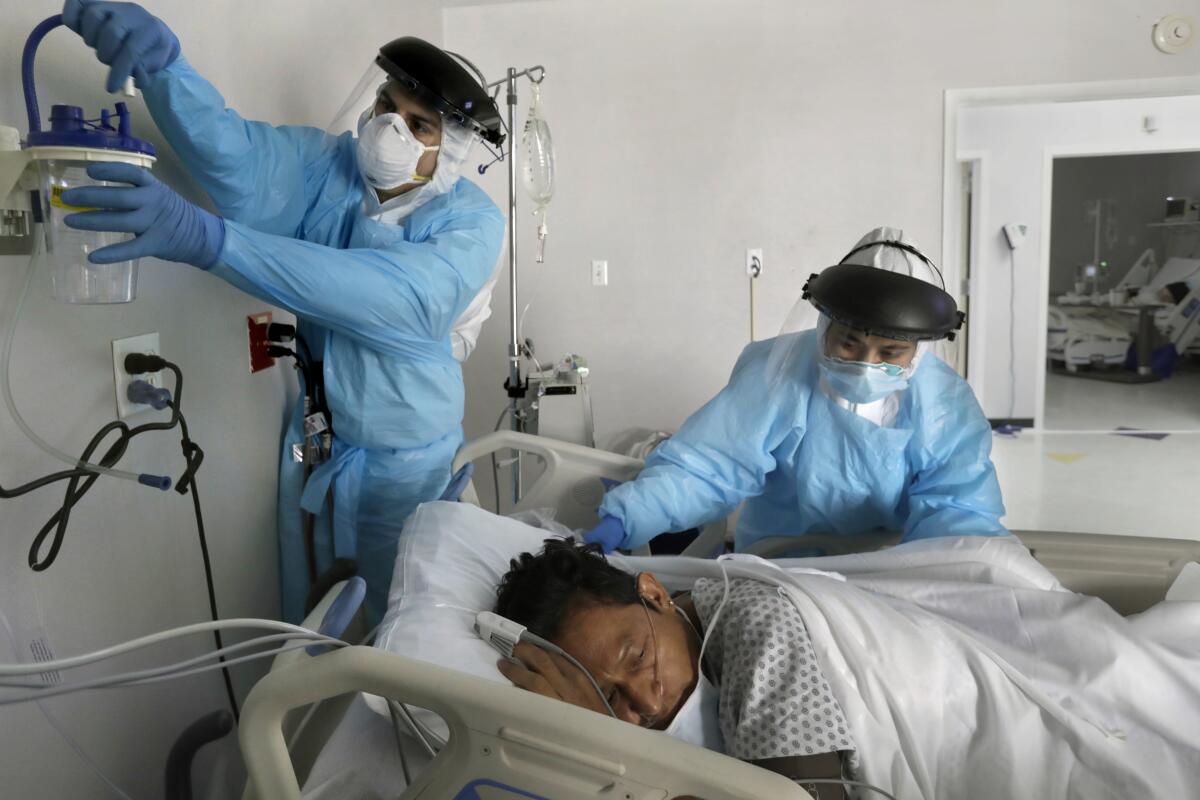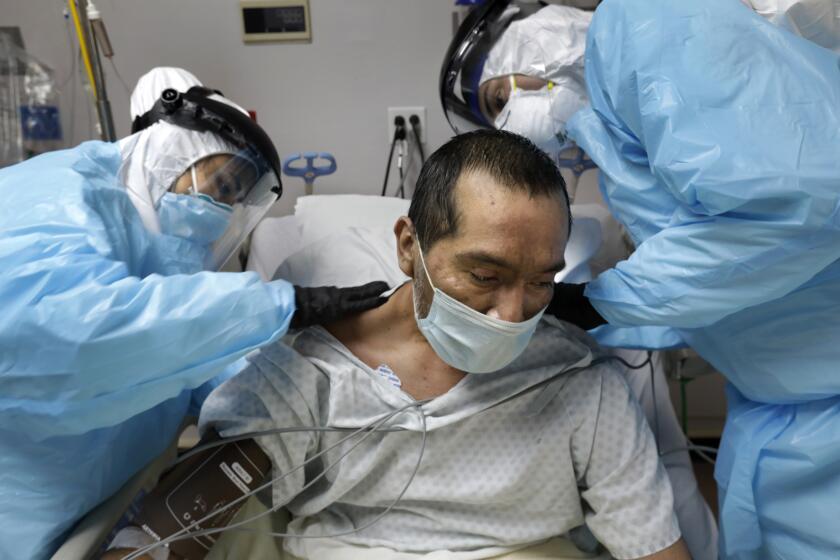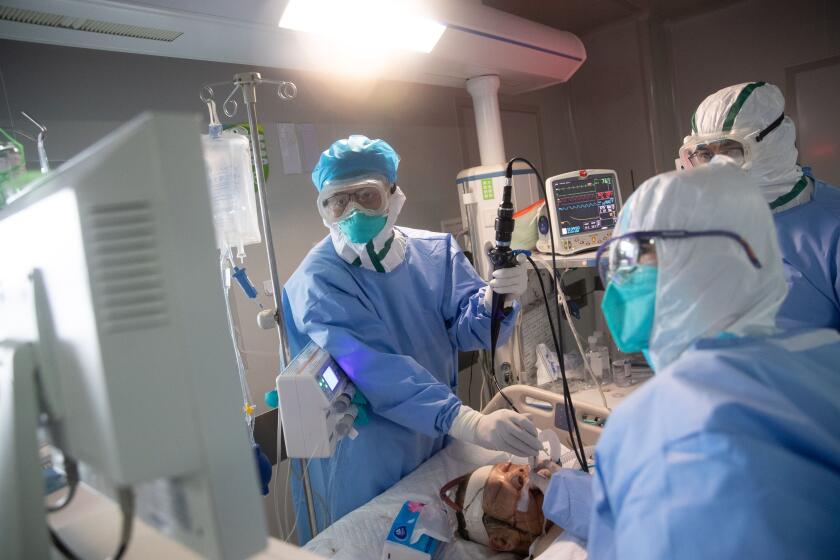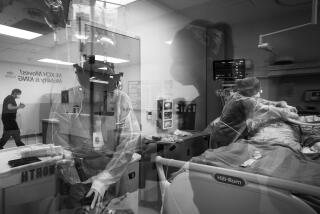The list of whoâs most at risk for severe cases of COVID-19 just got longer, CDC says

The older you are, the greater your risk of suffering a severe case of COVID-19, according to new guidance from the Centers for Disease Control and Prevention.
The CDC has previously warned that people over 65 were especially vulnerable to severe illness if they became infected by the coronavirus. And that is still true.
But more recent data from across the United States show that younger adults are also at risk and should not assume they will be spared from a serious case of the disease.
âCDC now warns that among adults, risk increases steadily as you age, and itâs not just those over the age of 65 who are at increased risk for severe illness,â the agency warned Thursday. âAge is an independent risk factor for severe illness.â
Data published last week in the CDCâs Morbidity and Mortality Weekly Report revealed that the median age of Americans with confirmed coronavirus cases was 48 years old. That means half of those infected were older than 48 and half were younger.
COVID-19 has killed more than 100,000 people in the U.S., but some are more vulnerable than others. These charts show how Americans have been affected.
In fact, among more than 1.3 million cases reported through May 30, the incidence was higher among people in their 40s and 50s than for those in their 60s and 70s. Specifically, there were 541.6 cases per 100,000 people ages 40 to 49 and 550.5 cases per 100,000 people ages 50 to 59, compared with 478.4 cases per 100,000 people ages 60 to 69 and 464.2 cases per 100,000 people ages 70 to 79.
The highest incidence was seen in the oldest Americans, with 902 cases per 100,000 people ages 80 and up, according to the report.
Among those who become infected with the coronavirus, the risk of dying from COVID-19 increases sharply with age, the latest data show. Although the overall mortality rate for those 1.3 million cases was 5.4%, it was 1% or lower for Americans under 50. However, it was 2.4% for those in their 50s, 6.7% for those in their 60s, 16.6% for those in their 70s and 28.7% for those 80 and up.

More than 130 labs around the world are working to develop a COVID-19 vaccine. But what would it take to vaccinate everyone by early next year?
The risk of being hospitalized for COVID-19 was slightly higher for people in their 70s (34.1% of those infected) than for those who had passed their 80th birthday (32.5%). Similarly, the risk of being admitted to an intensive care unit was higher for those in their 60s (4.1%) and 70s (5.6%) than for those 80 and above (3.6%).
The fatality rate for people infected with the novel coronavirus is estimated to be less than 1%, according to a new study. Itâs 1.38% for those with COVID-19.
The new CDC statement also updated the list of underlying health conditions that are associated with an increased risk of a severe case of COVID-19. The most common is obesity, a condition that affects 42.5% of adults in the U.S. (Obesity is defined as having a body mass index of 30 or greater. You can check yours online.)
The estimated 14% of U.S. adults who have chronic kidney disease are also more vulnerable to a severe case of COVID-19, as are the roughly 12% of U.S. adults with type 2 diabetes, according to the CDCâs new guidance.
Other medical conditions that increase the risk for severe COVID-19 illness include serious heart conditions like coronary artery disease and heart failure; chronic obstructive pulmonary disease; sickle cell disease, and taking drugs that suppress the immune system after receiving an organ transplant.
There is âconsistent evidenceâ in reliable medical studies that each of these conditions is associated with an increased risk of developing a severe case of COVID-19. And when combined, the risk is even greater.
âThe more underlying medical conditions people have, the higher their risk,â the CDC said.
During the coronavirus outbreak, people with conditions like diabetes and kidney disease are adapting their medical routines to avoid exposure.
The agency also updated its list of conditions that might belong on that list and could be added as researchers learn more about COVID-19. These include:
⢠Moderate or severe asthma
⢠Cerebrovascular disease, which affects the blood vessels that supply the brain
⢠Cystic fibrosis
⢠High blood pressure
⢠Being immunocompromised as a result of a bone marrow transplant, HIV infection or another reason besides an organ transplant
⢠Dementia and other neurologic conditions
⢠Liver disease
⢠Pregnancy
⢠Pulmonary fibrosis
⢠Smoking
⢠Thalassemia, a disorder that reduces the amount of oxygen carried by red blood cells
⢠Type 1 diabetes
Researchers from the CDC and elsewhere are keeping a close eye on COVID-19 patients to learn more about the disease that has killed more than 491,000 people around the world since it emerged late last year in China. The United States has suffered about 125,000 COVID-19 deaths, more than any other country, according to the Center for Systems Science and Engineering at Johns Hopkins University.
As the number of COVID-19 patients grows, so does the list of recognized symptoms. The most common are cough, fever, muscle pain, headache and shortness of breath.
Even the youngest and healthiest among us could become targets of the coronavirus. To reduce your risk of infection, the CDC reminds you to wash your hands often, disinfect items and surfaces that are touched by many people, wear a mask or other face covering when out in public, and practice social distancing.










